Boots in Fashion: Evolution of A Timeless Style
No shoe collection will be complete without a pair of boots. Originally designed to be hard-wearing working shoes, this striking shoe style has been a style staple for fashionable women for decades. In this article, we will explore the origins of the boot and trace its evolution through the ages. We will also delve into the different materials and construction methods that are used to make boots, as well as the various styles and how to wear them.
The Evolution of Women's Boots
Boots have come a long way in fashion. Their evolution from practical footwear to a chic symbol is long and interesting. Below, we delve into their origins, as well as their ascent in the fashion world.
Origins of Boots
The earliest depiction of boots dates back to 15,000 BC, discovered in cave paintings in northern Spain. Pictorial evidence also suggests that the people of Persia wore boots as early as 7,000 BC.
It's safe to say that boots may be as old as civilization itself, evolving alongside society. Throughout history, their purposes and styles have undergone significant changes.
In the Roman times, boots served as functional footwear, enabling the Romans to travel long distances on foot. During the Middle Ages, they continued to fulfill their practical purpose, providing protection against disease and unsanitary conditions. Additionally, they acquired the role of a status symbol, with the length of their pointed toes indicating the wearer's standing in society.
In the next section, we will zoom in on their fashion evolution, exploring how they emerged as a style symbol and a wardrobe staple.
Boots in Fashion
During the Victorian era, boots were a popular footwear choice. With Victorian women being particularly fashion-conscious, there was a growing emphasis on the aesthetic appeal of boots. Furthermore, advancements in technology made it easier to embellish and add decorative elements to the boots.
Over time, the demand for fashionable boots continued to grow, and their aesthetic evolved as well. This demand surged in the 20th century, driven by the popularity of Western films in the 1940s and 1950s. Hollywood costume designers, seeking to enhance the allure of cowboy boots on screen, collaborated with renowned footwear designer Salvatore Ferragamo to create vibrant and intricately decorated versions.
At that time, films wielded significant influence on street fashion, leading people to adopt the cowboy boots they saw on screen as statement fashion accessories, regardless of their equestrian background. Cowboy boots became highly sought-after items during this period.
The boot's status in fashion solidified in the 1960s, with French designer André Courrèges's invention of the go-go boots, which set the standard for modern boot styles in the years ahead. The release of Nancy Sinatra's song “These Boots Are Made For Walkin” in 1966 further popularized this specific style as she performed the song in a pair.
In the decades that followed, different boot styles have risen to prominence as fashion icons of their time. For instance, the thigh-high boots popularized by It girl Jane Birkin in the 1970s and the UGG boots of the early 2000s, which were embraced by celebrities like Paris Hilton, Sienna Miller, and Nicole Richie.
Today, influenced by the trends of previous decades, a wide variety of boot styles — functional, fashionable, or a blend of both — are available. Explore our guide on the different types of boots to become acquainted with all of them.
Materials Used in Women's Boots
When it comes to picking a suitable pair of boots, affordability, your uses for it and the occasion are some factors you should take into consideration.
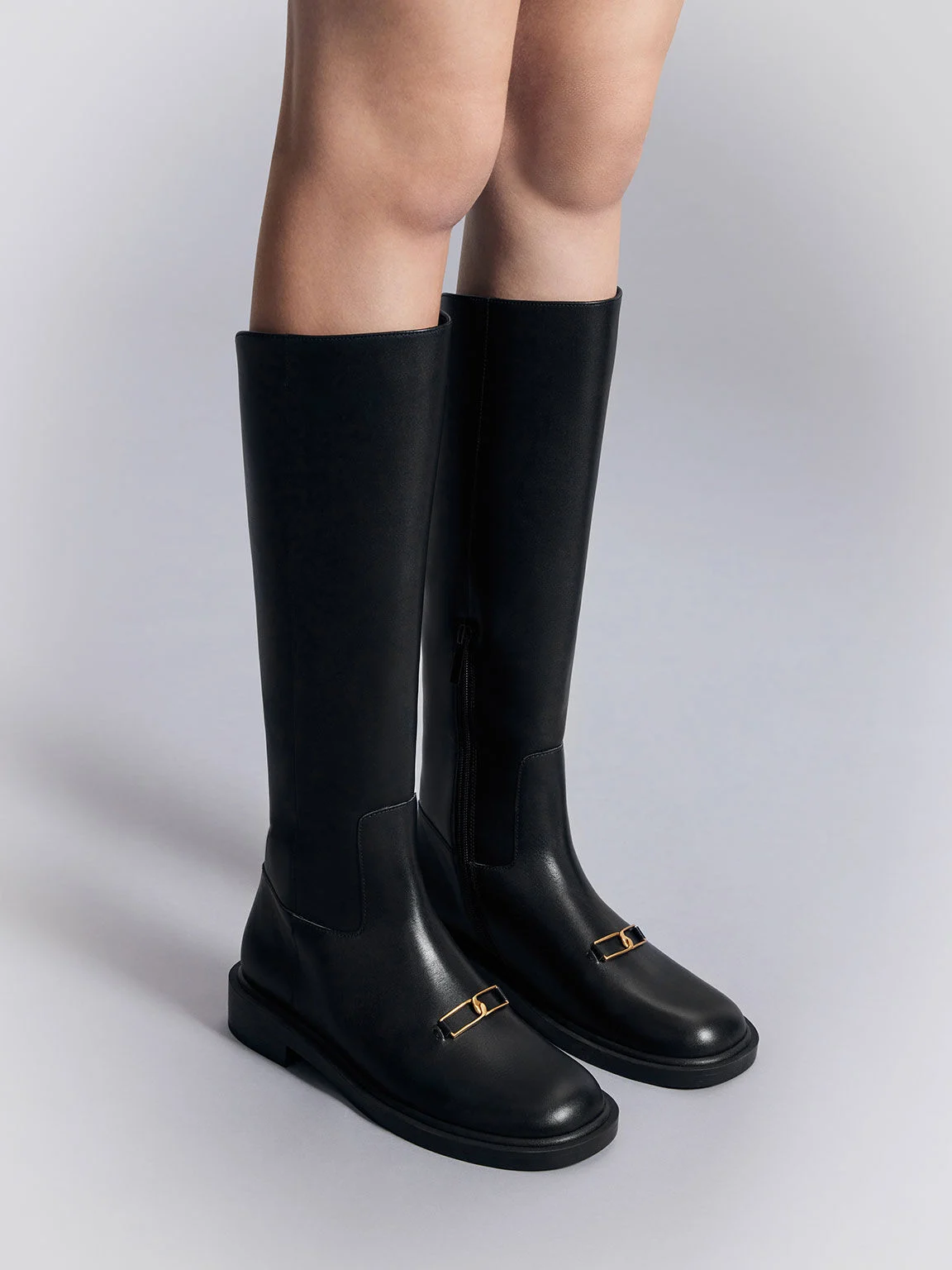
Leather
Leather is the preferred material for boots, since it is extremely durable and practical. It is hardy enough to withstand wear and tear, but also gets softer with use and will eventually mold to your feet after an initial period of breaking them in. They are usually treated to become water-resistant or even waterproof, which extends their longevity. Since it is of a premium quality, it also looks sophisticated in appearance.
Different types of leather have their own unique properties. Full grain leather, for instance, is a premium leather that does not undergo the buffing or sanding process, therefore allowing it to retain its authentic grain texture. Overtime, it develops a patina and a distinctive look that is highly sought after. It is also incredibly resilient, which makes it the top choice for high-quality boots. A softer type of leather is suede, which is made from the underside of animal skins. Its distinctive texture adds character to the design that it is applied on, which makes it visually appealing. Patent leather, on the other hand, is a coated type of leather that has a glossy finish. Its polished appearance is not only pleasing to the eye, but it is also waterproof and easy to clean.
However, because of the various processes and treatments it undergoes, leather can be a costly material. It also requires careful maintenance with specialized brushes and cleaning solutions. If you are planning to wear them for a long time, the durability of leather may make it worth the investment. However, if cost is a concern, other comparable alternatives are also available.
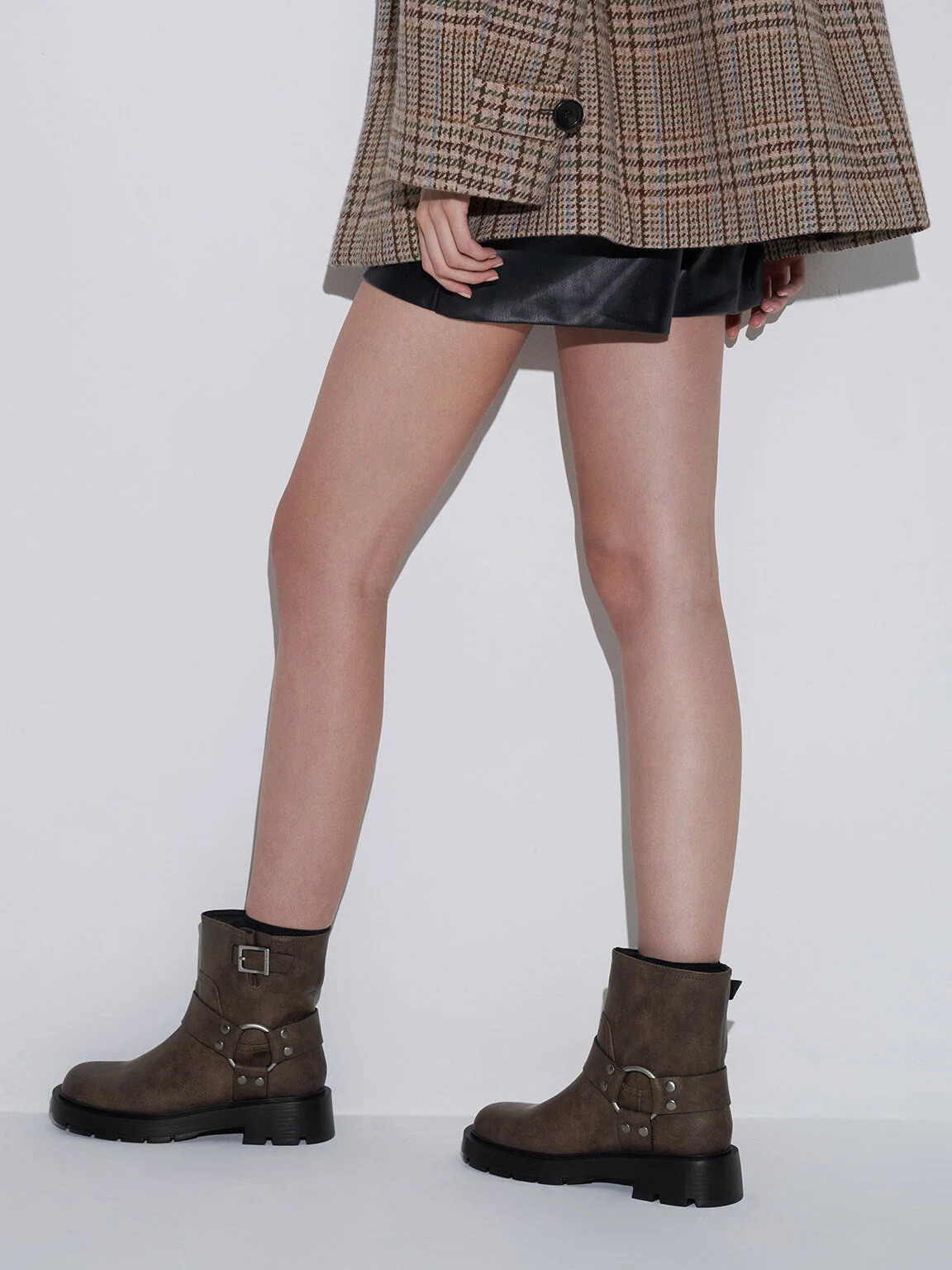
Synthetic Materials
Synthetic materials used in boots include nylon, polyester, synthetic leather, PVC (polyvinyl chloride), and polyurethane (PU). They are engineered to mimic the properties of leather while being more affordable and accessible. They are also cruelty-free and vegan alternatives to natural leather. Developments and innovation in the manufacturing processes of synthetic materials also means there are added benefits — such as enhanced water-resistance and lightweight construction — on top of their durability. This makes them well suited for everyday wear.
Yet, it does not last as long as natural leather does. Breathability may also be a concern — natural leather is moisture-wicking, while synthetic leathers are unable to replicate that quality.
Exotic Skin Materials
Apart from leather, other materials like snake, lizard and alligator skins are also used in the making of boots. They are sought after for their unique and striking patterns, which gives them a distinctive aesthetic — no two pairs of naturally-derived snakeskin or alligator skin boots will look exactly the same. It is even harder for synthetic materials to accurately capture the intricate patterns and rich hues of these materials, which is why they are treated as premium-quality materials. Lizard and alligator skins are also extremely sturdy with just the right amount of flexibility, making them highly durable and wearable — they can be worn for rough work, but can also double as sophisticated footwear for special occasions.
Given their rarity and laborious processing methods, boots made out of these types of materials are usually expensive and harder to find. Furthermore, consistent and proper maintenance is required, making them harder to care for. However, if their timeless aesthetic and unique properties is what you value, then a good pair is worth investing in. Otherwise, there are also synthetic options that you can experiment with first before making the commitment.
Boot Construction Techniques
So, we have looked at the different types of materials boots can be made from. In this section we will learn about how they are constructed and made, particularly three of the most commonly used techniques.
Goodyear Welt
Patented after Charles Goodyear Jr., the Goodyear welt has become one of the most well-known and iconic construction styles. Known for its intensive and laborious process, it involves a two-level stitching that makes for a highly sturdy construction while also allowing you to resole them as many times as you want. Welted shoes are also more water-resistant and you can attach double (or even triple) outsoles.
Blake Stitch
Another popular construction method is the blake stitch. It is one of the first mechanised methods for making boots, and it is loved for its cost-effectiveness, thanks to its simple and quick method. It involves a stitch going through the insole, outsole and upper.
Cementing
Entirely distinct from the above-mentioned methods, a cemented construction involves no stitching or welt. Rather, as the name suggests, the soles of the shoes are simply glued with a strong adhesive to the upper parts of the shoe.
Fashion Tips and Styling Ideas for Boots
The following fashion tips and styling ideas will help you create chic ensembles with any type of boots.
Styling Tips for Different Boot Styles
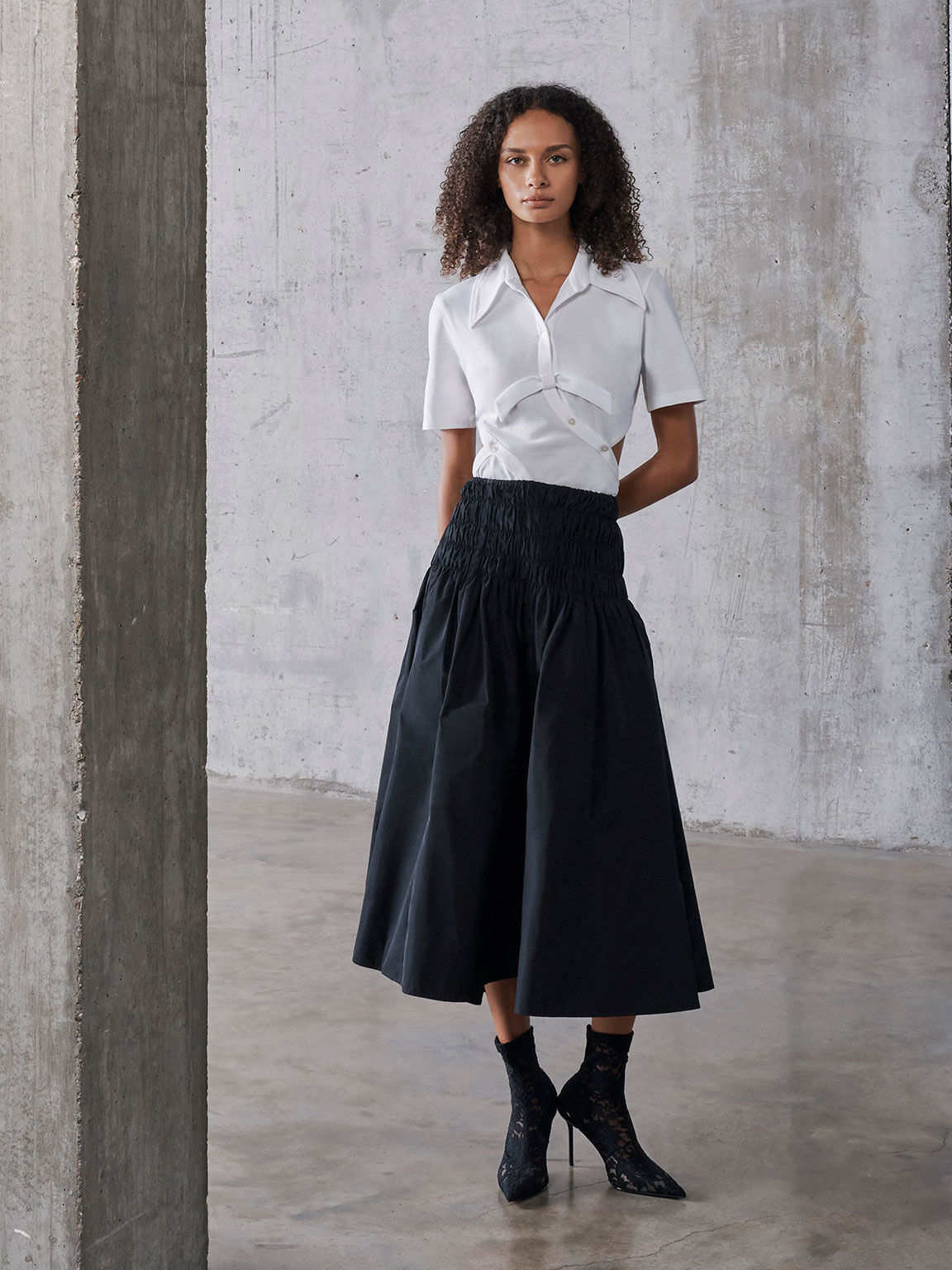
Ankle Boots
Ankle boots are a cornerstone of any wardrobe, featuring a shorter shaft height that makes them suitable for year-round wear, regardless of the season. For casual, laid-back days, opt for flat ankle boots — such as the classic Chelsea style — to strike a balance between style and comfort. They work wonders with everything, but pair exceptionally well with denim for a timelessly chic look.
If you are wearing them to the office, ankle boots with mid heels and sleek pointed toes will help to create a more polished appearance. Whether paired with tailored trousers or pencil skirts, they exude sophistication. Ensure a slight gap between the hemline and the boots for a proportionate silhouette, and stick to neutral tones like black, brown, and white for versatility.
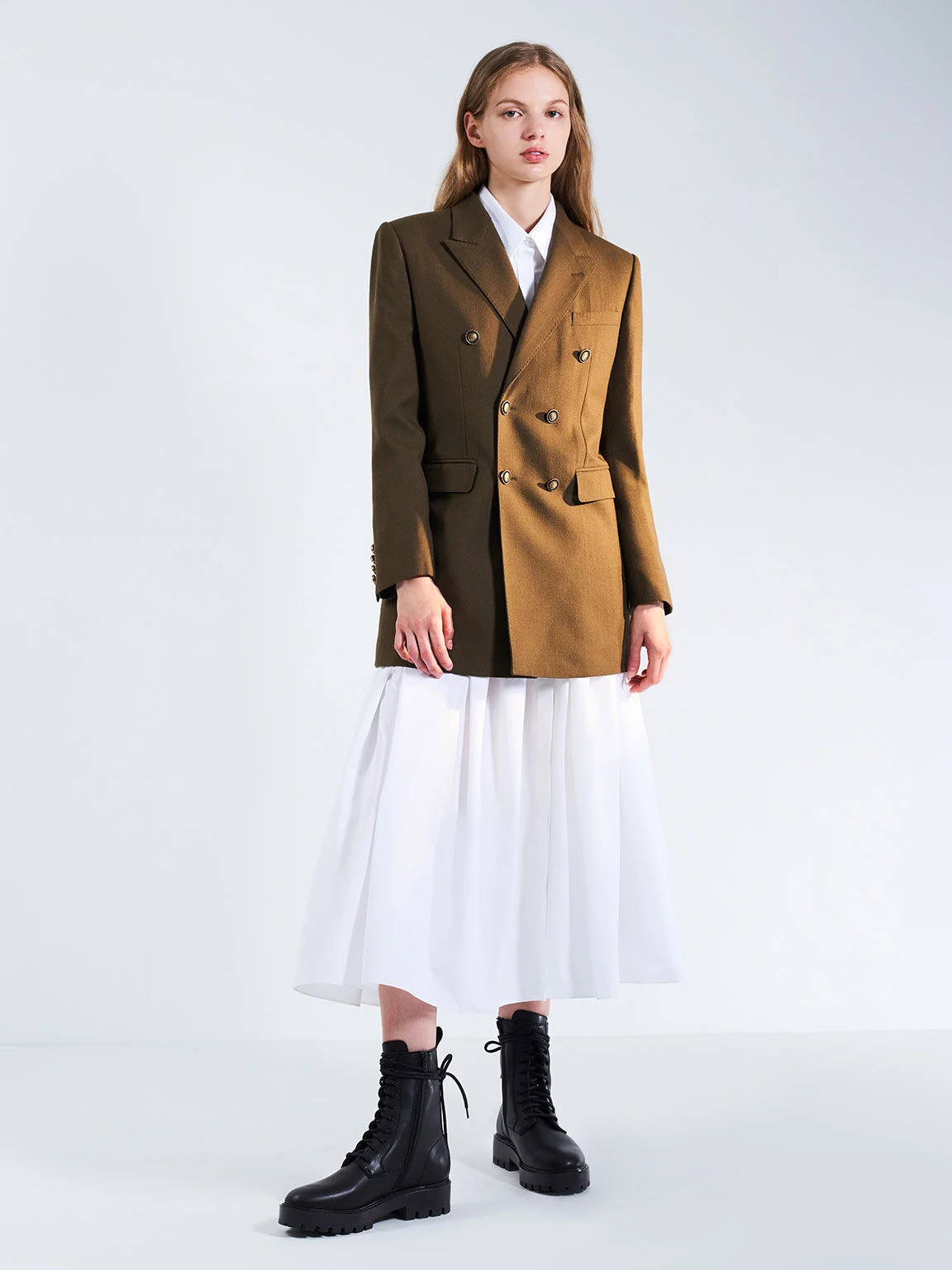
Combat Boots
Combat boots have all the qualities of a great transitional shoe, making them a popular footwear choice during the spring and fall seasons. They will effortlessly infuse any ensemble with a cool, fashion-forward edge.
One of the most timeless and stylish pairings for combat boots is with a floral dress. The juxtaposition between feminine florals and the ruggedness of the boots creates a visually striking contrast. It's a combination that never fails to impress.
For a nod to '90s fashion, consider styling a lace slip dress with combat boots, adding a cardigan for warmth and dimension. Alternatively, fully embrace the grunge appeal of combat boots by pairing them with leather pants and a matching jacket for an edgy, elevated vibe.
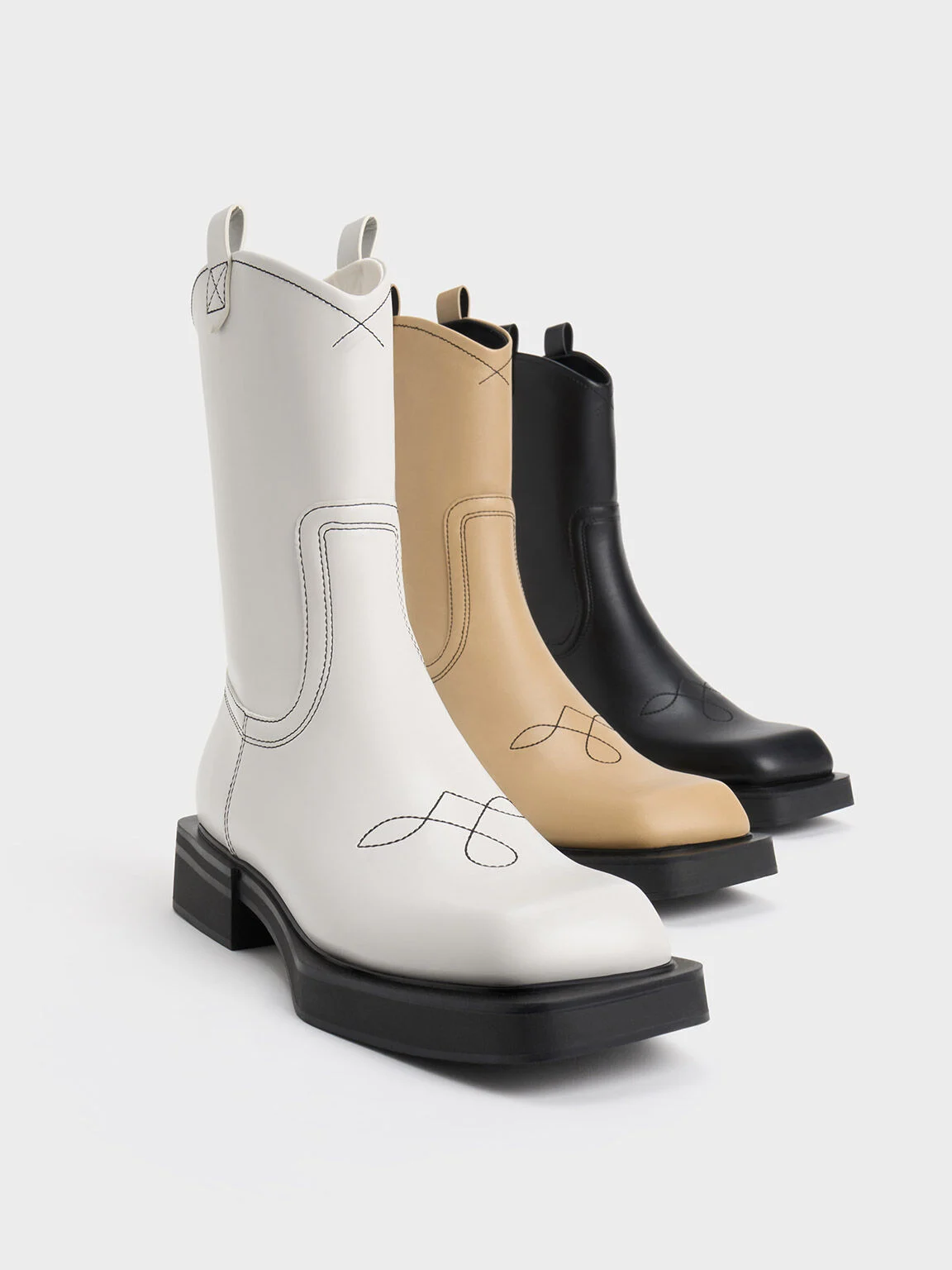
Western/Cowboy Boots
Western or cowboy boots will always remain a fashion favorite, but it can be challenging to wear them without veering into costume territory. To strike the right balance, start by selecting a pair of cowboy boots with a modern twist — think sleek, minimalist designs like a tonal black pair. Style them with elevated classics, such as a satin bias-cut skirt, to achieve a refined and chic look.
Denim is another timeless pairing for cowboy boots. Whether you tuck your jeans into your boots for an elegant equestrian-inspired look or leave them out for a more casual and relaxed aesthetic, the result is effortlessly stylish.
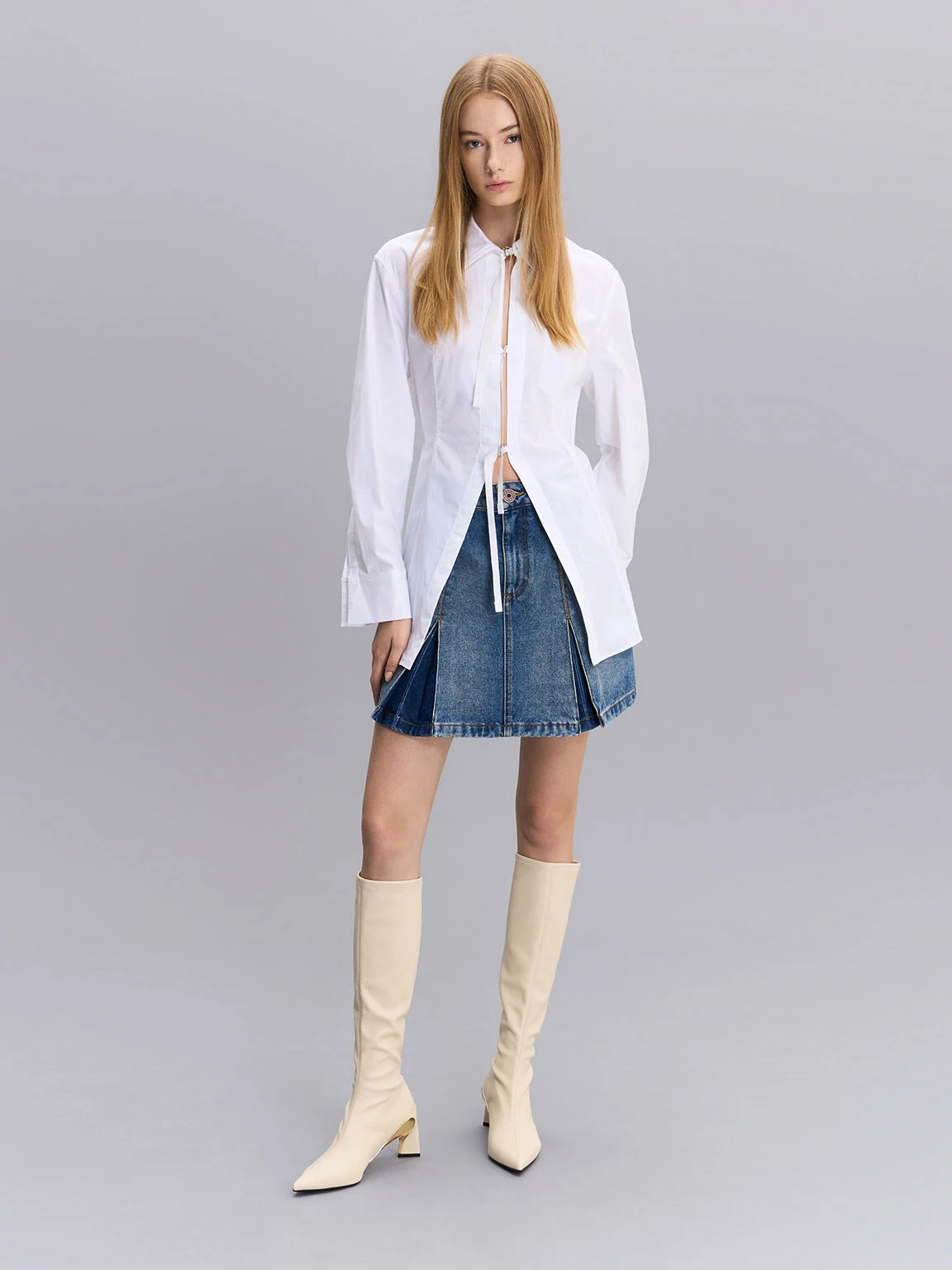
Knee-High Boots
Knee-high boots are renowned for their versatility. However, their tall shaft height can make them somewhat tricky to style. Here are two fail-proof ways to rock them.
- Pair them with a maxi skirt or dress. This combination not only adds a touch of sophistication but also ensures comfort and practicality. While the maxi skirt or dress covers most of the boots, it serves a utilitarian purpose by protecting our feet from the cold.
- To showcase knee-high boots in all their glory, consider tucking your pants into them. Skinny jeans make an excellent choice for creating this look because they do not add extra volume that takes up space in the boots. Any top can be paired with this ensemble to create an elegant look.
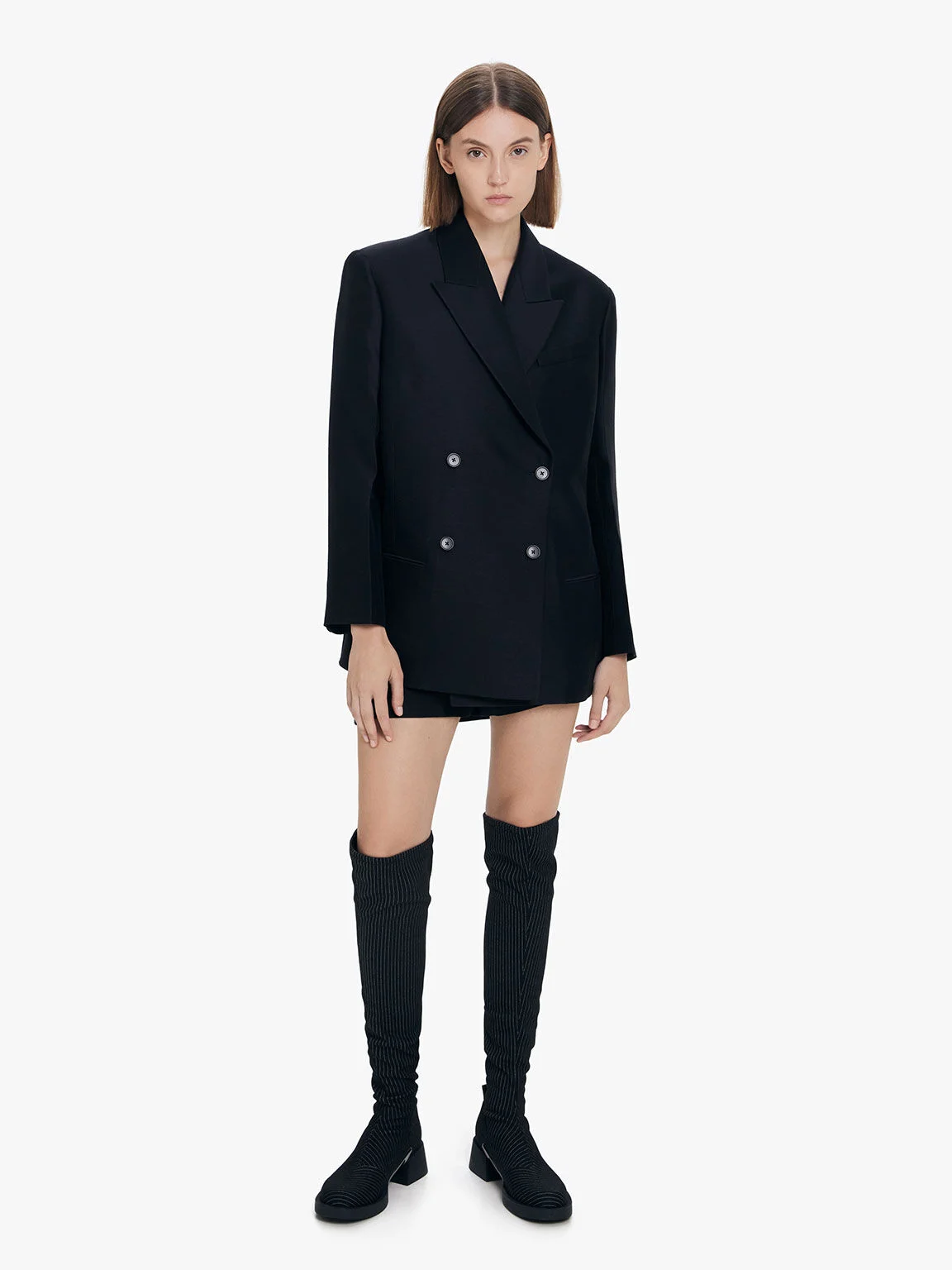
Thigh-High Boots
Thigh-high boots and short hemlines complement each other, creating a chic and statement-making silhouette. It is generally not advisable to pair thigh-high boots with long skirts or dresses, as they can appear bulky and cause discomfort due to their larger top portion. Extending higher up the leg, thigh-high boots ensure a fashion-forward look entirely on their own. Pair them with a mini skirt for a cute off-duty ensemble, or opt for a sleek, short blazer dress to exude sophistication on a girl’s night out.
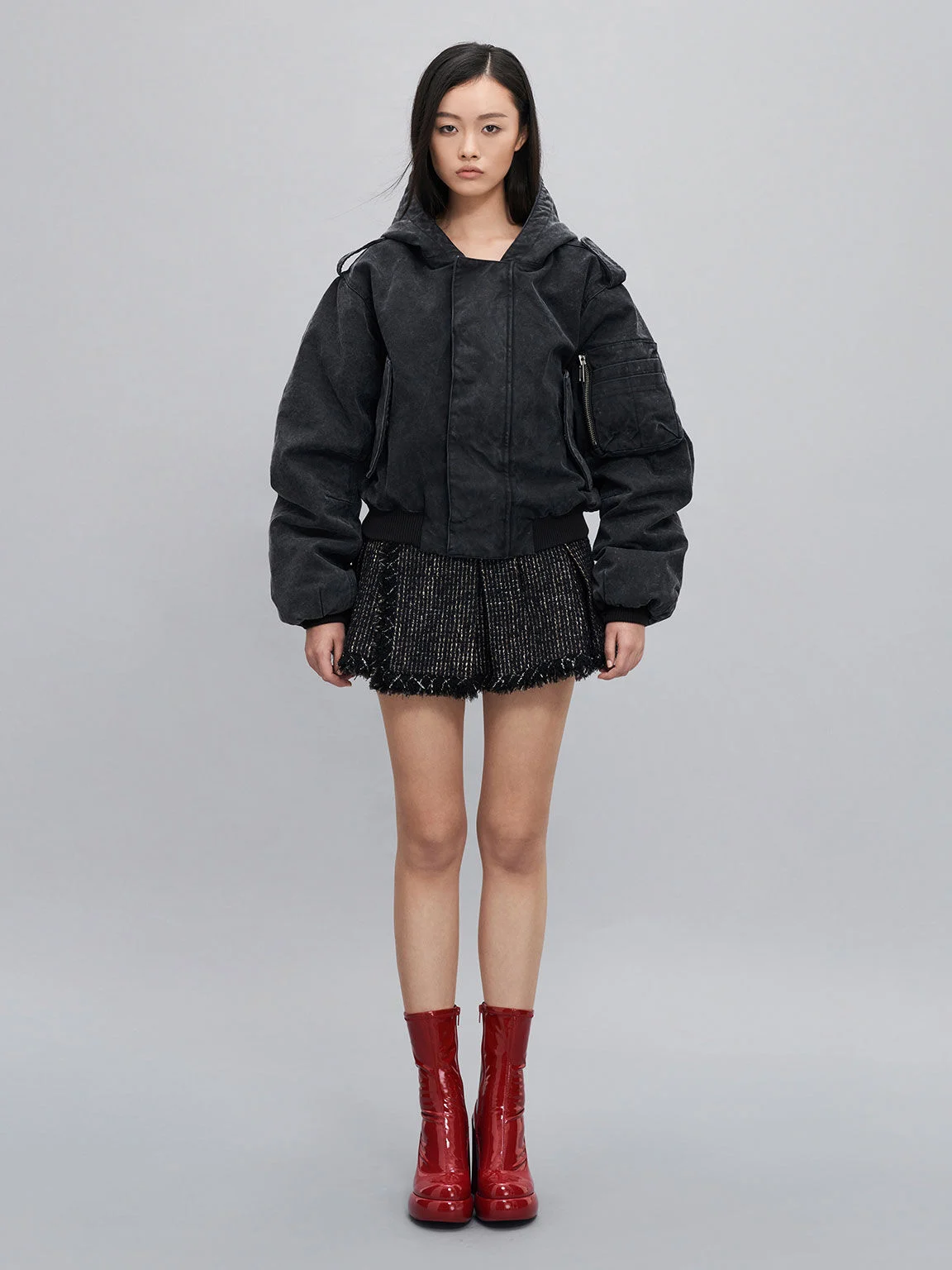
Statement Boots
Statement boots encompass a range of bold styles, from vibrant colors to eye-catching animal prints and striking metallic finishes. Essentially, they are made to stand out and will, instantly elevating any outfit. While there are no strict rules for styling statement boots, a general guideline is to keep the rest of your outfit simple, allowing these boots to shine as the star of the look. Opt for neutral pieces or minimalist designs with sleek silhouettes, such as a classic t-shirt and jeans, an all-black dress, or neutral-toned skirts. However, for maximalists, the sky is the limit—feel free to embrace bold clashes of colors, mixed prints, and pattern combinations to create a standout look that reflects your vibrant style personality.
Seasonal Styling Considerations
When styling boots, it is important to consider seasonal factors. In the colder months, such as fall and winter, knee-high boots are a great choice for keeping your feet and legs warm and dry. Pair them with thick socks or tights for added warmth. Additionally, choose materials like leather or suede that offer durability and protection against the elements.
For spring and summer, lighter options like ankle boots are ideal. Consider open-toe or cut-out styles to keep your feet cool on warmer days. Materials like lace and mesh are also more breathable.
You might also want to consider boots with hybrid designs, such as those with removable socks that transform them into sandals. These unconventional options offer versatility and ensure that the boots remain wearable throughout the year.
Popular Colors for Boots
The most common and popular boot colors are black and brown, which are often recommended by fashion insiders to first-time boot buyers due to their versatility. Both hues are excellent choices suitable for anyone's wardrobe. Classic brown boots tend to complement a wider range of colors, while black boots offer a more modern and formal aesthetic, ideal for polished occasions.
Beyond black and brown, popular colors encompass a spectrum of neutral tones, including grey, khaki, beige, and even dark jewel tones, such as burgundy and navy.
Colors beyond neutrals fall into seasonal categories, their popularity fluctuating with changing fashion trends.
Accessories and Details
Details can make all the difference. Paying attention to subtle elements can help you create a more compelling and cohesive look. For example, if the boots feature metallic chain or buckle accents, consider whether they are gold or silver. You can then accessorize your outfit with matching gold or silver jewelry. This seemingly small action can truly tie your look together.
Additionally, consider the type of fastenings the boots come with, as this can aid in styling your look. Boots with side buckles offer adjustable fits and provide versatility in styling options. On the other hand, boots with zippers are easy to wear and will add a cool edge to your look, but they may not offer as much customisation.
Since boots are often chunky footwear, it is essential to consider the size of their soles and heels when styling your outfit. Neglecting this aspect can throw off your outfit's proportions. For instance, chunky boots paired with wide-leg pants can create a heavy bottom, which may not be flattering. In such cases, opt for pointed-toe booties with kitten heels instead, these small details can make a big difference.
Boot Fit and Sizing Tips
Boots should not be too loose or too tight on the foot — ideally, they should fit snugly while still allowing some wiggle room. Most styles, especially those of a thicker and stiffer construction, would require some breaking in before they become comfortable. To find the right fit, the boots should feel comfortable around the widest part of your foot, and they should not pinch at the heel. If you are looking to style them with thick socks, look for pairs with a more generous allowance at the heels and shafts, or consider sizing up.
The way the boots fit also depends on its specific style. Higher-rise styles might sometimes fit the feet well but are too tight around the calves or thighs. Boots with wider top edges, like cowboy and harness boots, would be more accommodating options. Alternatively, certain features like elasticated panels and lace closures offer some degree of flexibility in the fit of the boots. For sturdier and more protective styles like hiking and combat boots, another key area to look out for are the ankles — there should be just enough room for movement without too much slippage.
Ultimately, finding the right size and fit is important for your foot health. Wearing boots that are too tight may lead to structural problems like the development of bunions, while boots that are too big might mean inadequate arch support. It is best to shop for your boots in person, and to walk a few steps in them to ascertain how they move with your feet.
Maintenance and Care
High-quality boots will be some of the most hard-wearing and durable shoes you will ever own, but they also require proper maintenance to maximize their shelf-life. Here are some tips for boot care.
Cleaning and Conditioning
First, it is important to note the type of material your boots are made from. Whether they are crafted fully from leather, a mix of leather and faux leather, or from softer materials, such as suede — they all require basic cleaning and conditioning. With any type of boots, it is essential to give them regular cleaning with a soft and clean cloth to remove any accumulated dirt or dust.
For leather or mixed-leather boots, consider investing in leather creams and leather conditioners that will help maintain their natural smoothness and prevent the material from cracking or drying out. Whereas for suede or other fabric boots, they require more specific care, including the use of special suede brushes, as well as material-specific care products.
Waterproofing
Another way you can care for your boots is through a ‘waterproofing’ treatment. As the name suggests, this adds a protective layer on top of the boot material, making them even more resistant to external and unexpected damage from harsh weather conditions, as well as moisture.
Storage Tips
Last but not least, storing your boots in well-ventilated areas and away from direct sunlight is one of the easiest ways to keep your boots in pristine condition. Do note to also air your boots from time to time, allowing them to ‘breathe’ and dry out from any internal moisture caused by sweat. Do also consider investing in boot trees that will help keep them in shape, even after long periods of storage.
Now that you have an in-depth understanding of the history, construction, styling and maintenance of boots — from ankle to thigh-high — you can make an informed choice on your next pair of boots. Whether you are looking for boots that you can wear every day or statement ones for a special occasion, there will be a pair in our extensive collection of boots that will suit your personality and purpose.